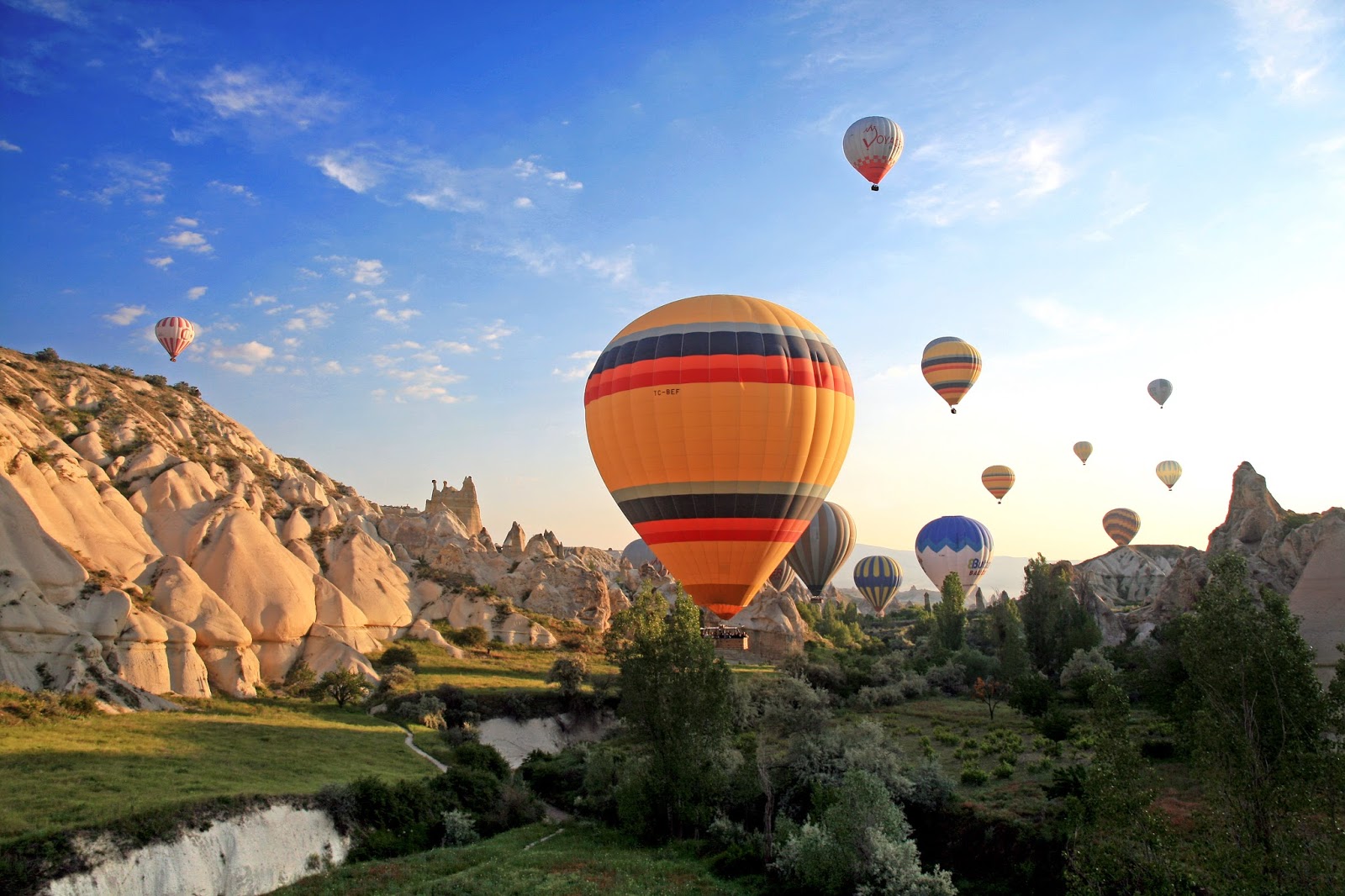
Nestled in the heart of central Turkey, Cappadocia is a dreamlike region that mesmerizes visitors with its otherworldly landscapes and rich cultural heritage. Among its many treasures, the iconic fairy chimneys stand out as a testament to the area's unique geological history and human ingenuity. These natural wonders, combined with the region's historical significance and vibrant traditions, make Cappadocia a must-visit destination for travelers seeking a truly unforgettable experience.
The Geological Marvel of Fairy Chimneys
The fairy chimneys of Cappadocia are towering rock formations shaped over millions of years by natural forces. These formations were created by volcanic eruptions that blanketed the region with thick layers of ash, which solidified into a soft rock called tuff. Over time, wind and water erosion sculpted the tuff into the distinct shapes we see today, ranging from towering spires to mushroom-like pinnacles.
The most striking aspect of the fairy chimneys is their sheer diversity. Some stand as solitary sentinels, while others cluster together in whimsical groups, creating an enchanting landscape that looks like it belongs to another planet. The formations are especially stunning at sunrise and sunset when the changing light bathes the rocks in hues of gold, pink, and orange.
Historical and Cultural Significance
Cappadocia is not only a geological wonder but also a cradle of human history. For centuries, the region's soft tuff provided an ideal material for carving, and early inhabitants took full advantage of this. They hollowed out the fairy chimneys and surrounding cliffs to create homes, churches, and entire underground cities. These structures served as shelters, places of worship, and even safe havens during times of conflict.
The Goreme Open-Air Museum is one of the most famous sites showcasing Cappadocia's rich history. This UNESCO World Heritage site features a collection of rock-cut churches adorned with stunning frescoes dating back to the Byzantine era. The intricate artwork depicts scenes from the Bible and offers a glimpse into the spiritual life of the region's early Christian communities.
Popular Fairy Chimney Locations
Cappadocia is home to several areas where visitors can marvel at the fairy chimneys. Each location offers a unique perspective on these natural wonders:
- Pasabag (Monks Valley): Renowned for its mushroom-shaped fairy chimneys, Pasabag is a serene spot perfect for exploring and photography. The area also features small caves and chapels carved into the rock formations.
- Devrent Valley (Imagination Valley): This whimsical valley is known for its fantastical rock shapes that resemble animals and other figures. It's an excellent place to let your imagination run wild.
- Love Valley: Named for its phallic-shaped rock formations, Love Valley is both a humorous and breathtaking destination. A hike through this valley offers stunning views and a chance to appreciate the sheer scale of the formations.
- Uchisar Castle: Perched atop a hill, Uchisar Castle is the highest point in Cappadocia. While not a fairy chimney itself, the castle provides panoramic views of the surrounding landscape, including countless chimneys dotting the terrain.
Hot Air Balloon Rides: A Bird's Eye View
One of the most iconic ways to experience Cappadocia's fairy chimneys is from the basket of a hot air balloon. As the balloon soars above the valleys and plateaus, you'll be treated to a breathtaking aerial view of the unique terrain. The sight of dozens of colorful balloons floating against the backdrop of the fairy chimneys at sunrise is nothing short of magical.
Activities Beyond the Fairy Chimneys
While the fairy chimneys are undoubtedly the highlight of Cappadocia, the region offers a plethora of other activities for adventurous and curious travelers:
- Underground Cities: Explore the subterranean wonders of Derinkuyu and Kaymakli, ancient underground cities that once housed thousands of people. These labyrinthine networks include living quarters, storage rooms, and even chapels.
- Hiking and Trekking: Cappadocia's valleys, such as Rose Valley and Red Valley, are perfect for hiking. The trails take you through stunning landscapes, ancient ruins, and hidden churches.
- Pottery Workshops: Visit the town of Avanos, known for its centuries-old pottery tradition. Participate in a workshop to create your own ceramic masterpiece.
- Traditional Cuisine: Savor the flavors of Cappadocian cuisine, including testi kebab (meat cooked in a clay pot) and local wines made from grapes grown in the volcanic soil.
Best Time to Visit
Cappadocia can be visited year-round, but the best times are spring (April to June) and autumn (September to November). During these seasons, the weather is mild, and the landscape is at its most vibrant. Summer can be hot, while winter offers a unique charm with snow-covered fairy chimneys creating a magical scene.
Tips for Visiting Cappadocia
- Stay in a Cave Hotel: Enhance your experience by staying in one of Cappadocia's unique cave hotels. These accommodations blend modern comfort with the region's traditional architecture.
- Book Activities Early: Hot air balloon rides and guided tours are extremely popular, so it's wise to book in advance to secure your spot.
- Wear Comfortable Shoes: Many of Cappadocia's attractions involve walking or hiking, so sturdy footwear is essential.
Conclusion
The fairy chimneys of Cappadocia are more than just natural formations; they are a gateway to a world of history, culture, and breathtaking beauty. Whether you're exploring ancient churches, drifting above the landscape in a hot air balloon, or simply soaking in the ethereal views, Cappadocia promises an experience that will stay with you long after you've left. Pack your bags and embark on a journey to this enchanting land where nature and history come together in perfect harmony.
